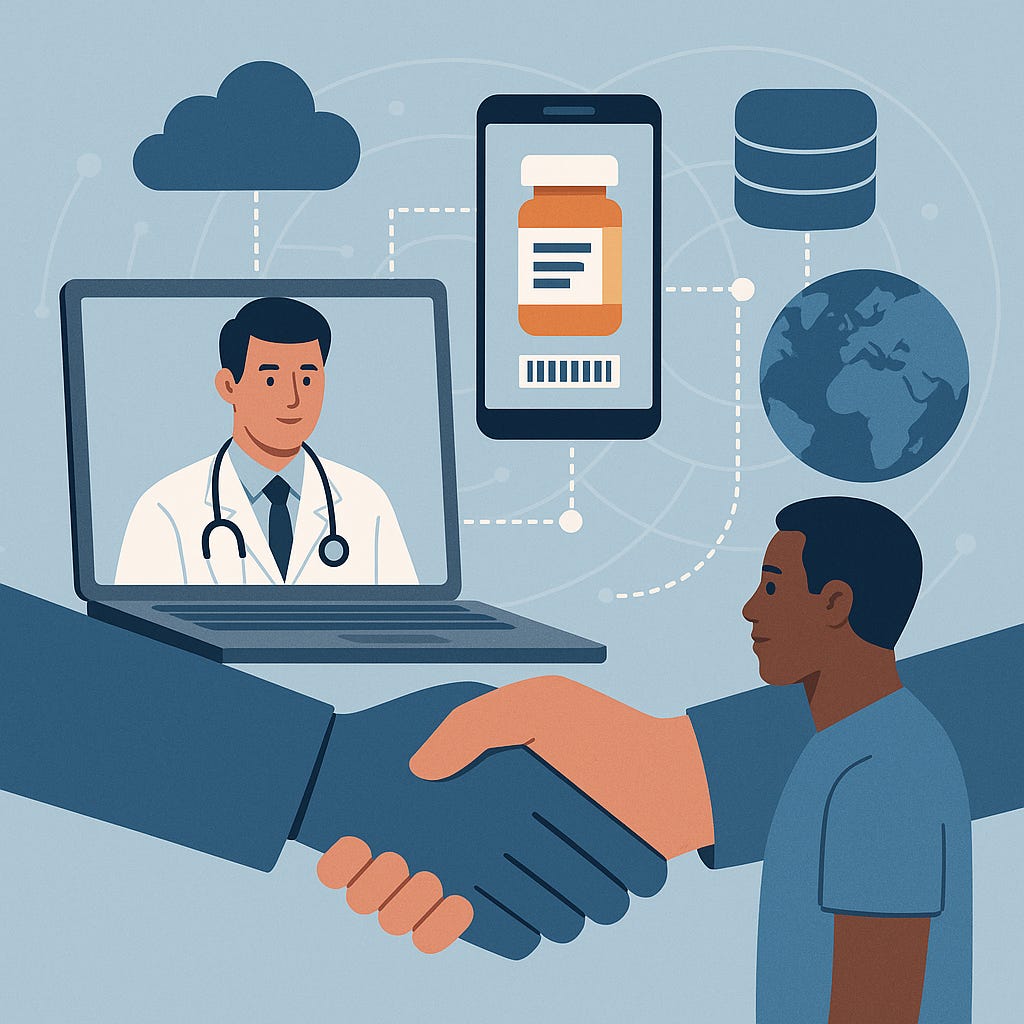Building Trust in Telemedicine: The Tech Infrastructure Behind Reliable Cross-Border Prescription Delivery
Tech Backbone Enabling Trusted Global Rx Delivery
As telemedicine adoption surges across India, a new challenge has emerged—bridging the physical gap between digital consultations and timely access to prescribed medications. For patients in tier-2 cities like Palakkad, the reliability of medicine courier services has become just as critical as the virtual care experience itself.
That’s where the best medicine courier services in Palakkad are redefining expectations—not just by delivering pills, but by building a technology-led trust network for modern healthcare. These providers are quietly solving complex logistical and regulatory problems with a combination of APIs, data integrations, and cold chain intelligence that rivals their urban counterparts.
This blog explores how healthcare logistics is evolving into a tech-first infrastructure, why that matters to digital health platforms and telemedicine startups, and how it’s laying the foundation for scalable, compliant, and patient-centric healthcare delivery.
From Delivery to Digital Infrastructure: A Shift in the Courier Role
Traditionally, courier services were evaluated by cost and delivery timelines. But in the post-COVID world, especially in healthcare, delivery success is defined by compliance, traceability, and trust. Patients expect their medications to arrive fast, intact, and verified. Doctors expect prescriptions to be handled securely. And platforms expect seamless data exchange.
Leading courier providers have stepped up—integrating with telemedicine platforms, using smart APIs to sync patient records, and enabling eKYC verification before dispatch. For example:
ePrescription APIs allow digital clinics to auto-send valid prescriptions to courier dashboards.
Geo-verification systems confirm patient identity and address before fulfillment.
Dynamic routing algorithms ensure faster delivery despite tier-2 infrastructure challenges.
This tech-led approach makes medicine courier partners an extension of the telemedicine workflow, not an afterthought.
Cold Chain Monitoring: The Hidden Technology Behind Safe Medicine Transport
Medicines—especially temperature-sensitive ones like insulin, eye drops, or certain biologics—are highly susceptible to degradation. Inaccurate storage or long exposure to heat can render them ineffective or harmful.
This is where the latest generation of courier services employs cold chain IoT sensors, which monitor:
Internal package temperature in real time
External environment changes during transit
GPS-based location and timestamp logs
Alert triggers when temperature thresholds are breached
These data points feed into centralized dashboards through RESTful APIs, offering healthcare providers full visibility into every delivery. In some systems, patients can even track these metrics on their phones—increasing confidence and transparency.
It’s innovations like these that enable the best medicine courier services in Palakkad to serve customers across borders, despite climatic or infrastructure constraints.
Data Security and Compliance: Healthcare Logistics Meets Regulatory Tech
In healthcare, compliance is not optional. Any organization handling patient data or prescriptions is bound by laws like India’s Personal Data Protection Bill (PDPB), HIPAA (in the U.S.), and international customs standards for pharmaceutical imports and exports.
To remain compliant while scaling, modern courier services embed regulatory frameworks into their platforms using:
End-to-end encryption protocols for all patient or prescription data transfers
Secure API tokens and OAuth2 authorization for data access control
Auto-generated digital documentation for customs declarations, especially for overseas shipments
Electronic proof-of-delivery (ePOD) mechanisms with timestamped audit trails
In doing so, these logistics providers become regulatory partners for digital health companies. A telemedicine platform looking to serve patients in the Middle East or Europe from India, for instance, can only do so if its courier partner understands export norms for pharmaceuticals—and has tech built to comply.
Interoperability: Making Courier Services Plug-and-Play for HealthTech Platforms
One of the greatest barriers to scaling logistics across healthtech ecosystems is lack of interoperability. Most courier services traditionally operated in silos, making integration a painful, manual process. But with the emergence of API-first platforms, the tide is turning.
Leading providers now offer:
Open API libraries with SDKs in major languages (Node.js, Python, Java)
Webhook support for real-time status changes and exception alerts
White-label interfaces for platform branding
Integration with EHR, CRM, and warehouse systems via standards like FHIR or HL7
This creates a seamless backend for health startups that want to automate everything from patient onboarding to prescription generation to medicine dispatch—without having to reinvent the wheel.
With these tools, even emerging telemedicine apps can plug into the logistics infrastructure of the best medicine courier services in Palakkad, gaining delivery reach and regulatory peace of mind without heavy investment.
Conclusion:
For too long, logistics was treated as an operational layer—something to manage after the product or platform was built. But in healthcare, especially in the age of telemedicine, logistics is strategic infrastructure.
Whether it’s prescription compliance, temperature integrity, patient data security, or global export documentation—every technical decision in logistics impacts clinical trust and business scalability.
That’s why forward-thinking healthtech founders and product leads are now choosing courier partners like they choose APIs or cloud infrastructure—with care, technical evaluation, and scalability in mind.
For decision-makers evaluating the next growth leap, especially from tier-2 cities like Palakkad, the message is clear: your medicine courier service isn’t just a vendor—it’s your healthcare delivery partner. And with the right technology behind it, that partnership can scale beyond borders.



